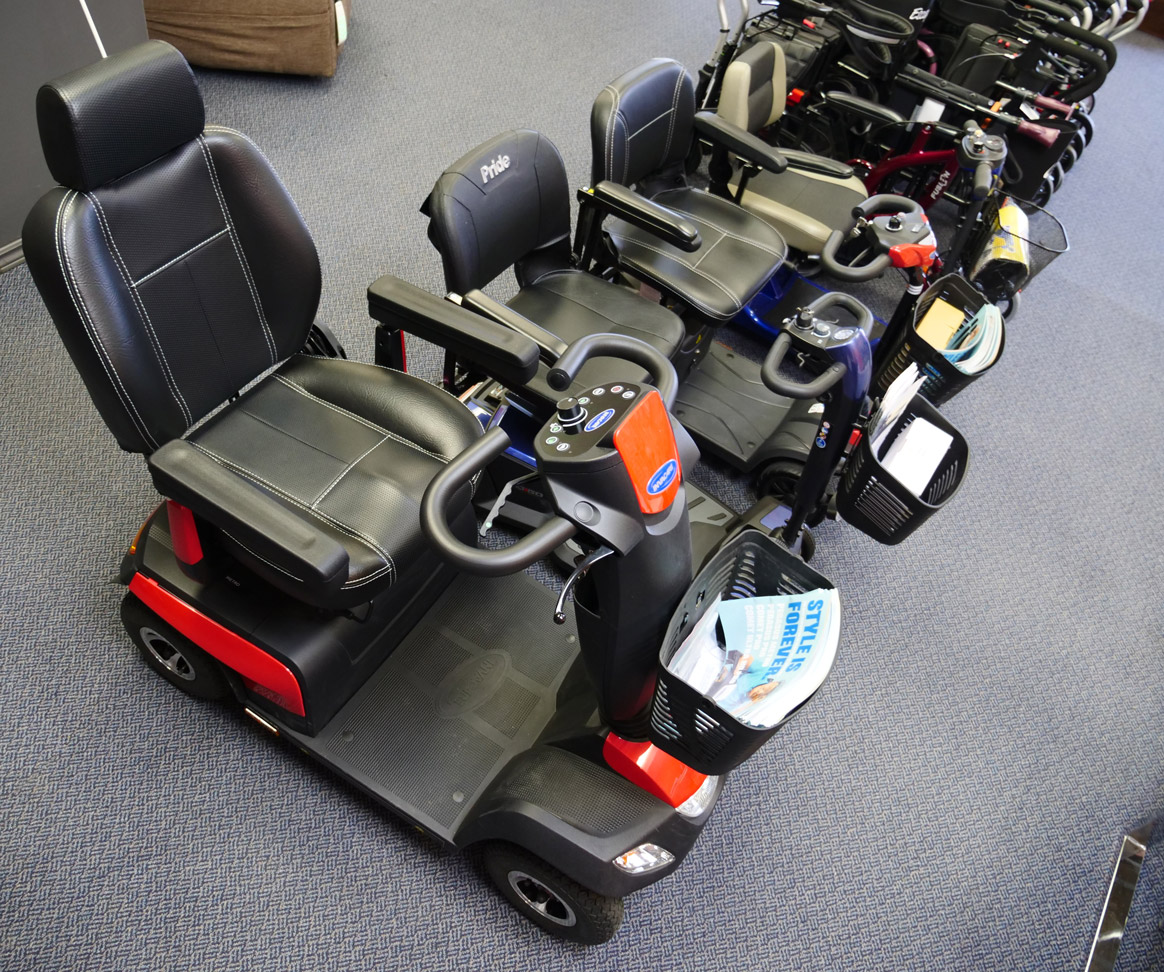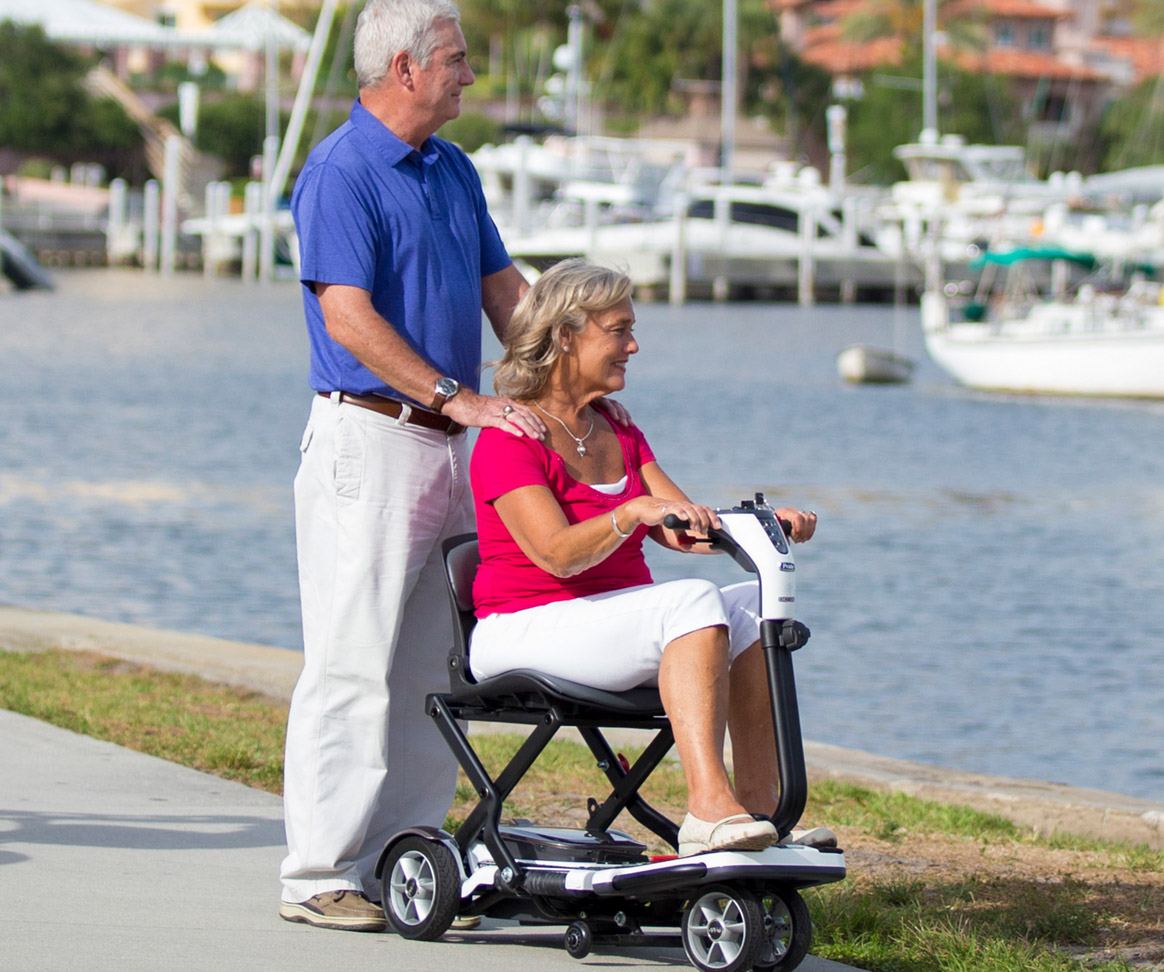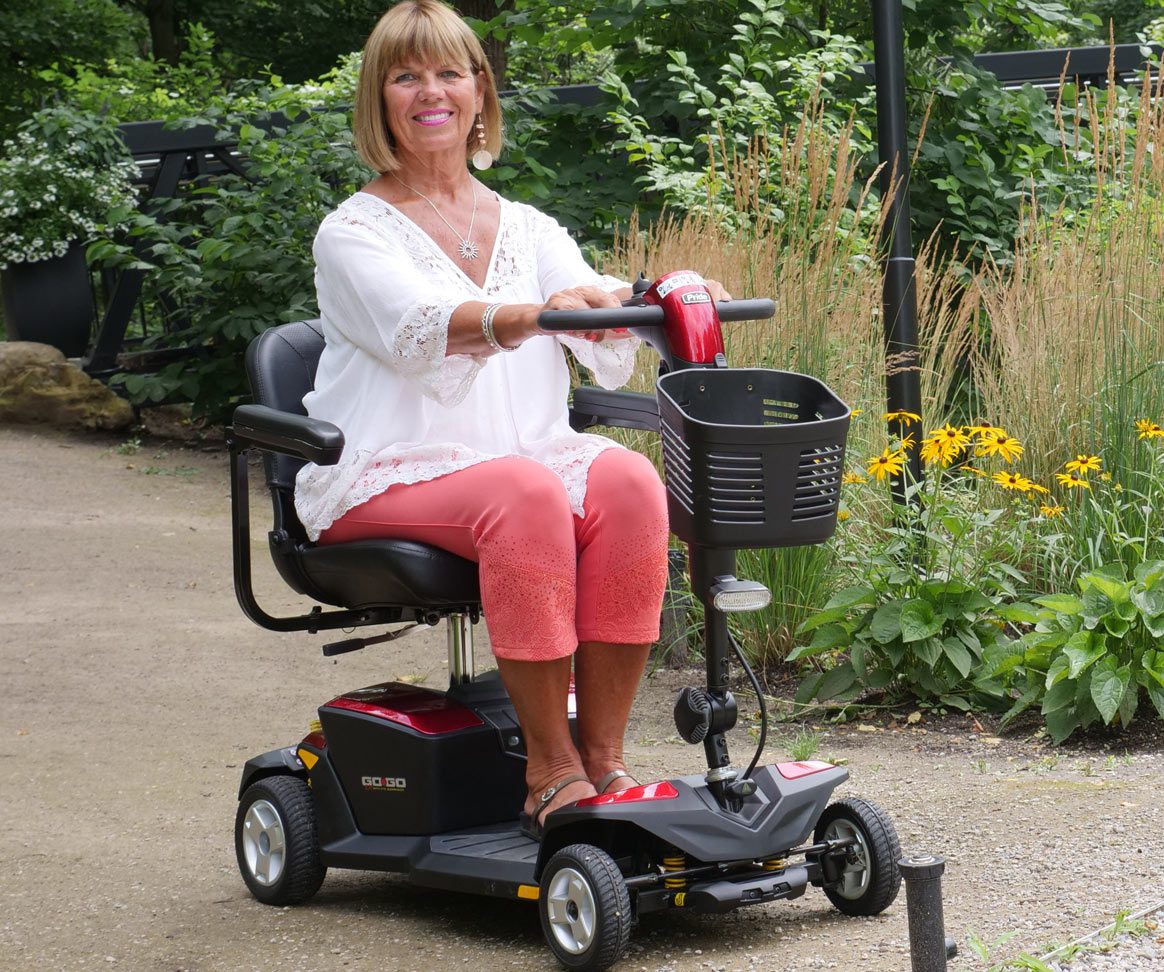7 Tips to Choose the Best Mobility Scooter
1. Indoor or outdoor use
You should consider where you plan to ride your scooter the most often. If the scooter is primarily for indoor use, you may want to select a three-wheel scooter that maneuvers around corners better. If you prefer a four-wheel scooter, you may want to choose one with smaller wheels and a tighter turning radius. Before purchasing, it is important to measure the doorways in your home to ensure the scooter will fit through. Keep in mind that you may lose up to 2″ if the doorway has a hinged door. If the scooter is mostly for use at the mall or some other location that requires travel, a folding scooter is a better option.
If the mobility scooter is primarily for outdoor use, a four-wheel scooter is recommended since it travels over bumps and rough terrain better. Larger wheels and pneumatic wheels will also make the ride smoother. You should also consider weather conditions in your location when purchasing a scooter for outdoor use. In general, scooters are not equipped to handle ice, snow, rain, and other weather conditions which can interfere with electrical components and cause damage.
Ground clearance is an important factor to consider avoid getting stuck if you plan to travel over bumps or rough terrain. Ground clearance is the space under the scooter, between the wheels. Travel/portable scooters generally have less space underneath than full-sized scooters. Specialty scooters (such as heavy-duty models) may have even higher ground clearance. If you know that you will be travelling on rough terrain, or if there is an obstacle (e.g., a door threshold) that you routinely encounter, select a mobility scooter with a higher ground clearance.
Size of scooter
In addition to the number of wheels, it is important to consider if the size of the scooter suits your intended use. If you plan to travel short distances such as shopping in stores or at home, a smaller scooter with smaller wheels will suffice. Smaller wheels will however, lead to a bumpier ride, and they are not comfortable on uneven ground such as pavement.
A medium-size scooter will increase your travel range. Typical uses include local neighborhood trips or in a shopping mall. It is more difficult to manoeuvre a medium size scooter around places with a tight turning radius, such as clothing stores where smaller scooters are better suited.
A large scooter is suitable for use in rural communities with a wide turning radius. Travel range is increased versus a medium size scooter and you will have a higher maximum speed. If your scooter is large, make sure you have room to store it in your living space.
2. Fit of the Scooter
The fit of your mobility scooter can affect your comfort. Before purchasing, you should check the seat height to make sure you can sit comfortably. Your feet should be flat on the footrest and your knees should be bent at a 90-degree angle. You should also be able to reach the tiller comfortably without curving your back. Three-wheel mobility scooters offer more leg room and may be a good option for taller users.
You should also check the listed weight capacity of the scooter to ensure that it can properly support your weight as well as the items you plan on carrying. Four-wheel scooters have wider, sturdier wheelbases which offer more stability to heavier users.
The best way to determine which mobility scooter is right for you is to visit a local dealer to speak with an expert and test drive different models in their showroom.
3. Controls
To operate a standard T-shaped tiller, you must be able to hold onto it with both hands and have the manual dexterity to operate the speed controls and other options such as turn signals. Most scooters require constant pressure to move forward and backwards. Removing pressure from the throttle lever will engage the brakes. Delta tillers are an option for people who lack manual dexterity and hand strength and may be controlled by either hand.
4. Seating
If you spend most of the day on your scooter, you may want to consider a full-sized three- or four-wheel mobility scooter that comes with a comfortable, well-padded, and contoured seat. A captain’s seat tends to offer the most comfort and support. A portable/travel scooter is more compact in size, and the seat has less padding, making it suitable for short trips.
5. Portability and storage
If you plan on travelling by car or airplane with your mobility scooter, a travel/portable scooter may be the best option. A travel mobility scooter is either compact, foldable, or can easily disassemble. When selecting your scooter, it is important to consider the weight of the heaviest piece to make sure you can lift it up yourself or with the help of a caregiver. It is also important to consider the dimensions of the scooter to make sure it will fit when stowed. A ramp or lift may be used for scooters than do not disassemble or for convenience’s sake.
6. Maximum recommended incline
The maximum recommended incline, or climbing angle, for mobility scooters is the maximum angle that they can travel up an incline with all the wheels on the ground. This is important for people who live in hilly places, have a steep driveway, or have an accessibility ramp to traverse. Travel/portable scooters have the smallest maximum incline range, typically 6 to 8 degrees. The range for full-sized and heavy-duty scooters is generally 6 to 12 degrees.
7. Speed of the scooter
Most travel/portable mobility scooters can reach speeds around 6 to 8 km/h. Full-sized scooters can reach around 10 km/h, and heavy-duty scooters can reach around 13 km/h. It is important to exercise caution while travelling at any speed with your mobility scooter.
Three- or four-wheels scooters can tip when rounding corners at high speeds, so it is important to slow down and exercise extra caution. A safe speed for most mobility scooters traveling on sidewalks is about 6 km/h. The tiller may have different speed limit settings indicated for indoor and outdoor use.
Get a quote!



